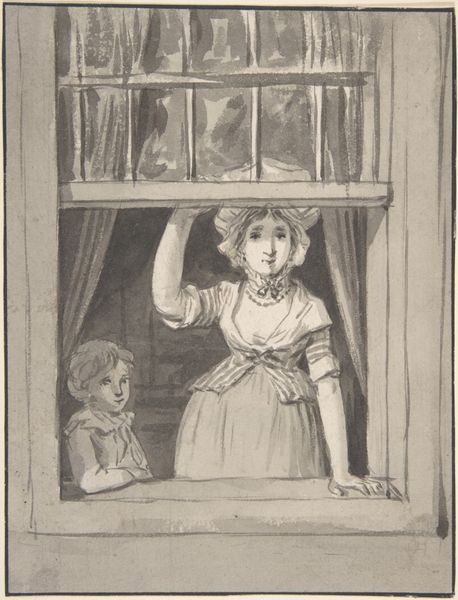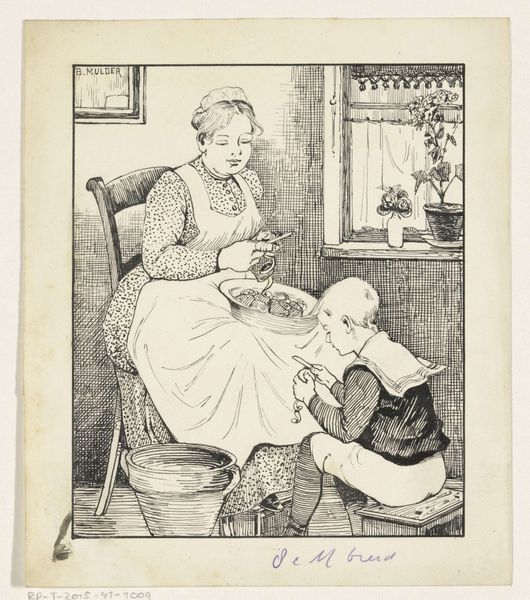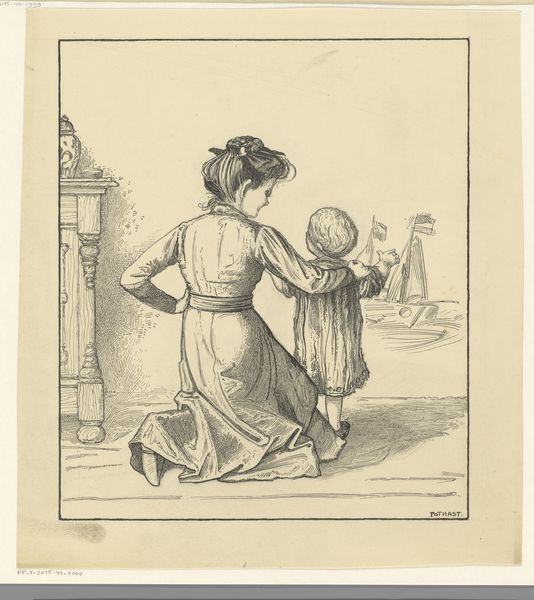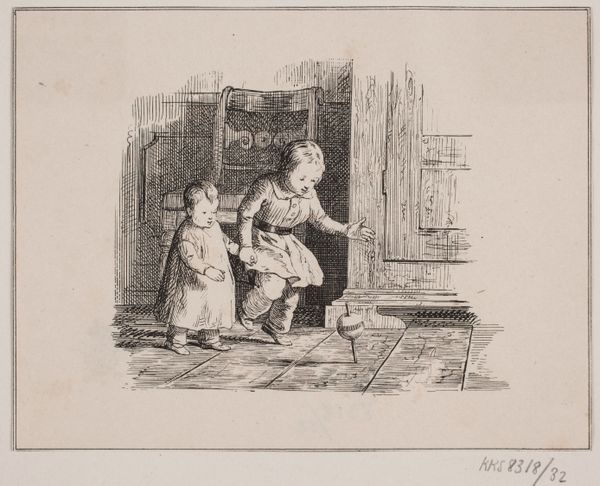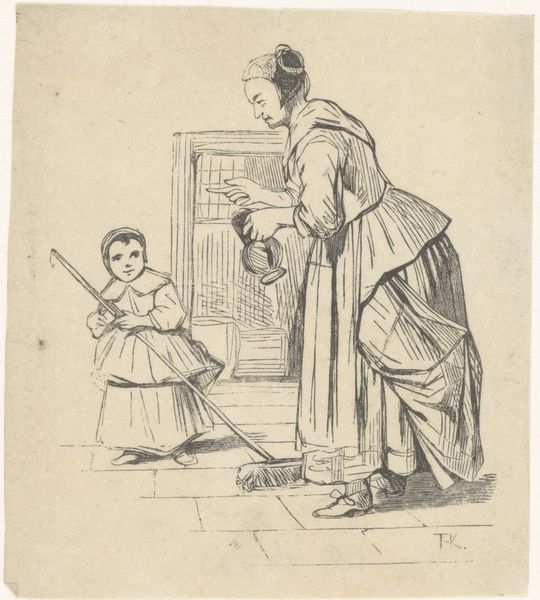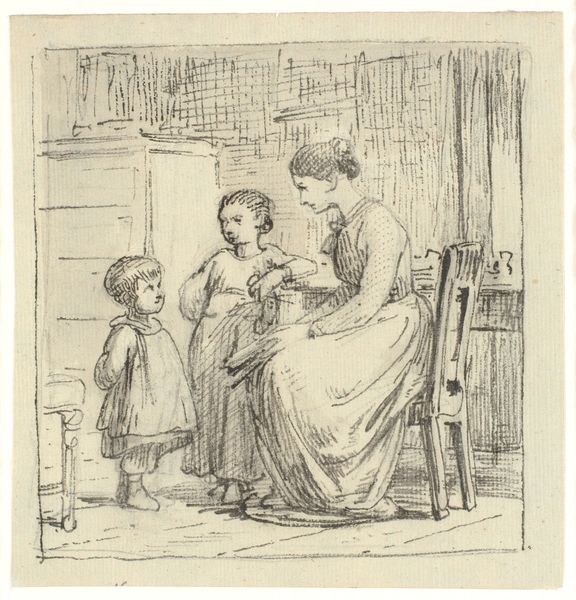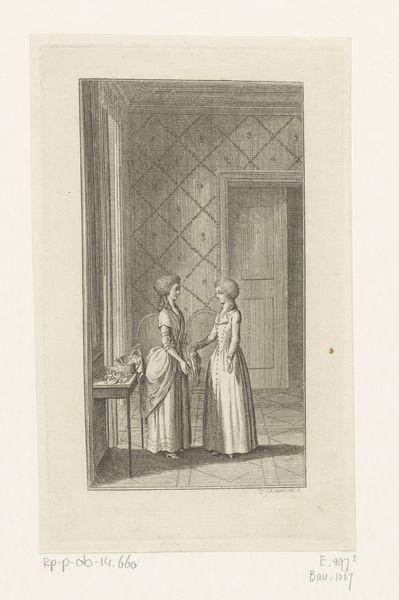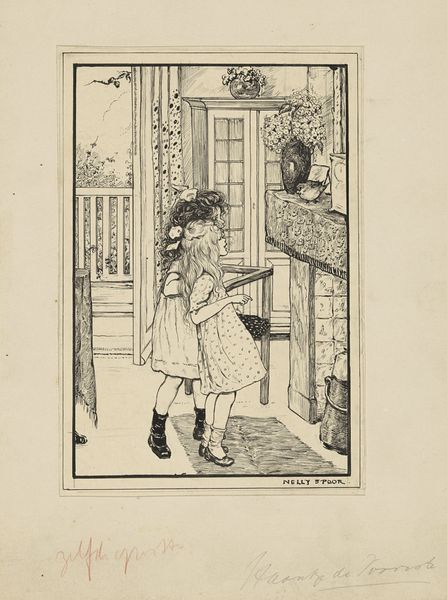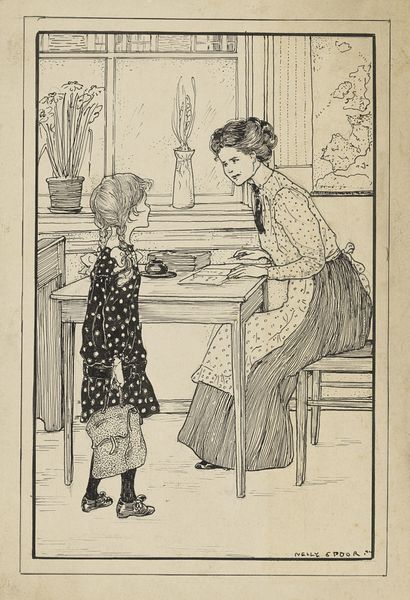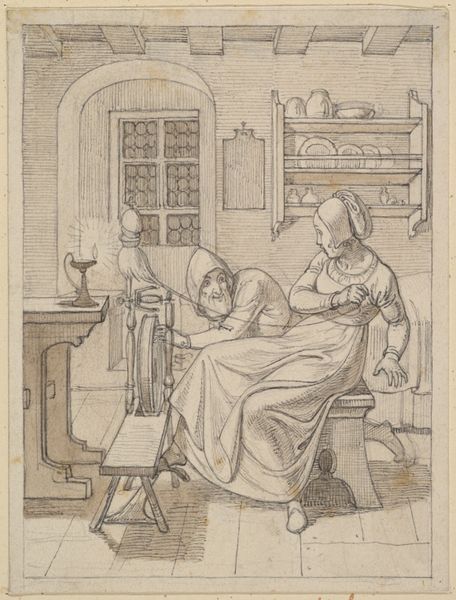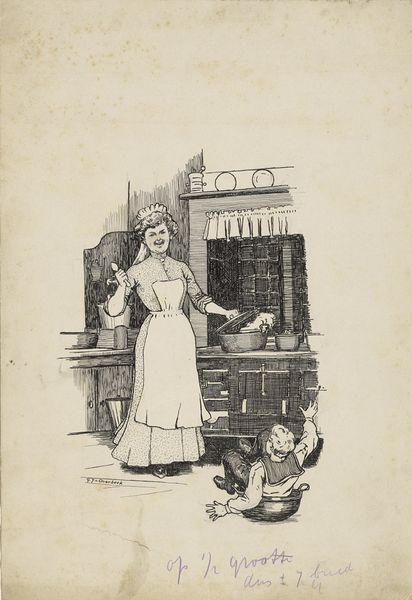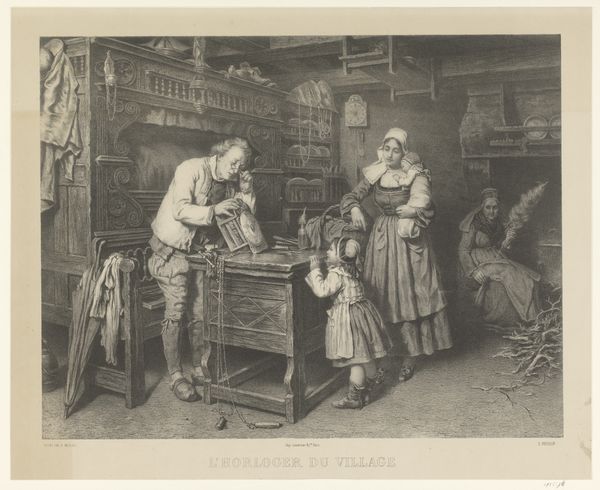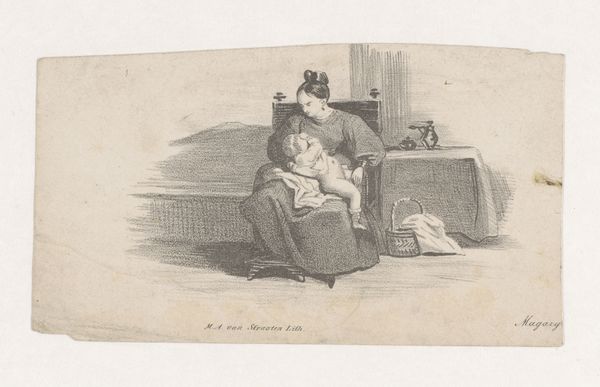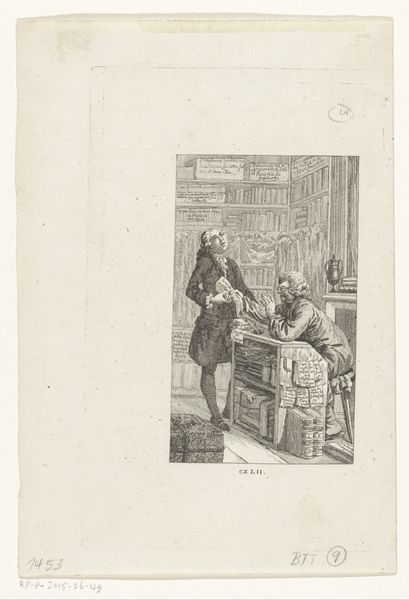
drawing, ink, pen
#
portrait
#
drawing
#
comic strip sketch
#
quirky sketch
#
sketch book
#
figuration
#
personal sketchbook
#
ink
#
idea generation sketch
#
sketchwork
#
pen-ink sketch
#
line
#
sketchbook drawing
#
pen
#
genre-painting
#
storyboard and sketchbook work
#
sketchbook art
Dimensions: height 273 mm, width 179 mm
Copyright: Rijks Museum: Open Domain
Editor: This pen and ink drawing by Nelly Spoor, titled "Vrouw reikt een meisje een stapel lakens aan," dating from 1895 to 1950, presents a scene of domesticity. It feels like a quiet moment between a mother and daughter, but the stack of linens seems so imposing, almost overwhelming. What can you tell me about this work? Curator: This image opens a door to considering the labor and the spaces that support domestic life, often relegated to the background. We see the weight of expectation, literally represented by that tall stack. Consider, whose labor is represented, and not represented, in this seemingly simple scene? The drawing gives the viewer only these two figures; what statement, intentional or not, does it make by doing so? Editor: It's true, you don't often see the realities of housework depicted in art. I guess I was seeing it as sweet at first glance, but the woman does seem burdened. Are you suggesting the artist might be making a commentary about gendered labor roles? Curator: Precisely. While we can't know Spoor's exact intentions, viewing the work through a feminist lens allows us to unpack the historical context: a time when women's roles were largely confined to the domestic sphere, their contributions often invisible and undervalued. Notice how the linework emphasizes the crisp folds of the linens, signifying the effort involved in their upkeep. Editor: I didn’t notice how much detail was in the linens before, the texture is beautiful but clearly speaks to the work they represent. The act of offering is itself also complicated now! Curator: It becomes loaded, doesn't it? We are looking at a potential act of transferring labor and responsibility across generations. Considering how art can be a form of both social commentary and personal expression, what does this transfer suggest to you now? Editor: It gives me a lot to think about. It's fascinating to see how much a simple domestic scene can reveal about the broader social structures at play. I’ll never look at a linen closet the same way again. Curator: Indeed. The personal is always political. Art like this can push us to see beyond the surface and question the roles we play and the expectations we inherit.
Comments
No comments
Be the first to comment and join the conversation on the ultimate creative platform.
